
Words from the Dean
October 2016
We are excited to welcome in a new academic year with new students, new faculty, new staff and new alumni joining our OneScience community. It is exciting and inspiring to read all of the many things you accomplished this past year. It shows in your teaching excellence, in your discoveries and publications, in your funded research, in your outreach, in your visibility and in your passion for everyone’s success. You have a lot to be proud of yourself, and we are proud of you. Thank you for all you do to strive for excellence, enhance diversity and foster harmony.
This fall, we launched a new M.S. and graduate certificate program in data analytics. We also launched a new undergraduate major in biochemistry and molecular biology to offer students in-depth training in molecular and computational biology preparing them for successful careers as modern molecular biologists. We are working on enhancing student success by developing internship programs, increasing resources for undergraduate research and study abroad, developing a summit to discuss mathematical and statistical training on our campus, and providing additional advising support and resources for our students and advisors.
We are also continuing to invest in resources to support faculty success related to teaching, research and outreach. For example, we are increasing support for grant writing techniques and proposal preparation, bringing distinguished diverse speakers to our campus, and raising funds to support and enhance teaching excellence. We are grateful to our alumni like Michael Waterman for creating new scholarships that provide Oregonians access to education and a chance to excel. We will also be investing in science communication skills training for faculty and students with several significant events throughout the winter and spring. We are excited about the leadership that many in our College are taking regarding effective use of learning assistants and other pedagogical innovations.
This year, we are committed to working with everyone across our College to make strong progress moving our strategic plan goals forward. Three of the working groups in data science, distance education and diversity completed reports with final recommendations. The College has begun working to implement these strategies and tactics. Specifically, we are developing workshops to expand our distance education efforts (Thanks, Mike Lerner); to partner with minority-serving institutions to enhance diversity in our graduate programs (Thanks, Judy Giordan and Doug Keszler); and to identify resources to develop a data science hub on our campus (Thanks, Lan Xue and Malgo Peszynska).
We are grateful to the working group that developed a 10-year capital improvement plan for the College. Working with the university Infrastructure working group and the OSU Foundation, we will identify and develop resources that can support our current and future infrastructure needs.
Finally, we are excited to celebrate SPARK: A year of arts + science through 2016-17. This gives us a wonderful opportunity to showcase the impeccable impact arts and science have on innovation in teaching and research and in all of our lives at OSU and beyond.
We are proud of you. We are proud of all our students, staff, faculty and alumni. Look forward to seeing you at the Fall Awards ceremony on Monday October 17 at 5 pm in the MU Horizon Room.
All the best and keep up the excellent work!
Sastry
Sastry G. Pantula
All the news that’s fit to print.
Please submit news, honors and awards, discoveries, events, research funding, student news, alumni updates and more. Just send us a quick email by the end of the month.

PEOPLE: HELLO AND GOODBYE
Welcome Class of 2020!
Welcome Class of 2020!
The College of Science welcomed 1,069 new undergraduate students, our largest class in five years but fairly flat from last year. We also welcomed 93 graduate students in science, a 24% increase from last year.
Class of 2020: Who are these future scientists?
Women comprise 61% of the class of 2020 and men 39%. The average age is almost 20 years old. Eighteen percent are transfer students. More than five percent are international students. Roughly 35% of our incoming class are students from underrepresented populations.
The average high school GPA of this class is 3.60.

Breakdown
| Asian | 13% |
| Black/African American | 2% |
| Hispanic | 11% |
| Multiple | 9% |
| Native Hawaiian/Pacific Islander | 0% |
| Non-resident Alien | 5% |
| Unknown | 2% |
| White | 58% |

| Breakdown by Major | |
| Non-degree | 99 |
| Biochemistry & Biophysics | 81 |
| Biology | 401 |
| Chemistry | 85 |
| General Science | 19 |
| Mathematics | 24 |
| Microbiology | 42 |
| Physics | 41 |
| Biohealth Sciences | 206 |
| Zoology | 50 |
New faces
We are thrilled to welcome Javier Rojo, who will be joining the Department of Statistics at Oregon State University as the inaugural Korvis Professor of Statistics in January 2017. We are grateful to Brenda McComb and Sabah Randhawa for providing support through TFDI funding. Dr. Rojo currently serves as chair of the Department of Statistics and Mathematics at the University of Nevada at Reno where he holds the Seneca C. and Mary B. Weeks Endowed Chair of Statistics. He is also an adjunct professor at the MD Anderson Cancer Center in Houston.
Dr. Rojo has made significant research contributions in the areas of survival analysis, nonparametric function estimation, statistical decision theory, random matrices and dimension reduction techniques. He is an elected fellow of the Institute of Mathematical Statistics, the American Statistical Association, the American Association for the Advancement of Science, and the International Statistical Institute.
Dr. Rojo created a research experiences for undergraduates program called RUSIS@UNR that was named one of the “Programs that make a difference” by the American Mathematical Society in 2014. He received the 2010 ASA Don Owen Award, which is presented to a statistician who exemplifies excellence in research, statistical consultation, and service to the statistical community.
From 2001 to 2013, Dr. Rojo was professor of statistics at Rice University. He began his academic career in 1984 at the University of Texas at El Paso as an assistant professor in the mathematical sciences department, where he received tenure and was promoted to full professor. He served as founding director of the Biostatistical Consulting at UT, El Paso, which was funded by the National Institutes of Health.
These current College of Science faculty recently joined the Dean’s Office!
Lyn Riverstone joined us as interim Assistant Dean for Academic and Student Affairs. In addition to this new role, she will continue to serve as an academic advisor in the Department of Mathematics. Lyn has been a senior mathematics instructor and academic advisor at OSU and brings more than 20 years of experience teaching mathematics at the university and community college levels.
Bettye Maddux has agreed to help the College as Research Program Administrator to assist faculty with grant proposal submissions beginning October 6. She can help you focus your research content while also providing technical grant support, especially with navigating the database-driven, software programs, such as Cayuse, FastLane, Grants.gov, etc. used by funding agencies, and formatting Current and Pending support and your bios. Please feel free to contact Bettye via an online request form or email. She can meet with faculty to discuss proposals in their offices until her office space is ready in Kidder Hall. Bettye will continue her work as Managing Director of the Center for Sustainable Materials Chemistry, a Phase-II Center for Chemical Innovation sponsored by NSF that conducts collaborative research in materials chemistry across eight academic institutions.
Welcome to these new faces in our College:
Alexandra Beck, Health Professions Advisor
Adam Chouinard, Integrative Biology Instructor
Richard Cooley, Assistant Professor of Biochemistry & Biophysics
Emy Daniels, Microbiologist
Kathryn Hadley, Physics Instructor
Barbara Kessel, Health Professions Advisor
Nate Kirk, Integrative Biology Instructor
Ashley Knight, Research Program Coordinator
Jennifer McKee, Academic Advisor, College of Science
Katherine McLaughlin, Assistant Professor of Statistics
Meta Landys, Integrative Biology Instructor
Steven Nguyen, Chemistry Instructor
Patrick Reardon, NMR Facility Director
Jeremy Rose, Integrative Biology Instructor
Javier Rojo, Korvis Professor of Statistics
Tresa Salleng, Office Specialist, Integrative Biology
Aijun Zhang, Assistant Professor of Mathematics

RESEARCH EXCELLENCE
Research funding trends up
The College of Science received $12.3 million in research grants and awards in fiscal year 2015-2016, fueling strong growth of 25% since FY14 although down 54% from last year. OSU’s overall research growth during that same period was 10%.
In terms of the number of grants and contracts, the College was awarded nearly 9% more grants than in FY14, compared to OSU’s 32.4% growth in number of research awards.
Grant support
With government funding for science research limited and competition fierce, the College is making adjustments and investments in grant support for faculty and examining a model for supporting research funding through strategic relationships with foundations, donors, state agencies, and industry.
With a commitment to faculty success, the College is increasing grant support for faculty and providing services of a grant coordinator to offer stronger administrative support of large-scale research proposals. The College will continue to provide training and mentoring for junior faculty and others to develop research proposals, as it did last spring. Please take advantage of this additional help. With this increased grant support, the goal is for more faculty to submit more high quality proposals and have more funding success. We welcome your suggestions for improvements that enhance our faculty success.
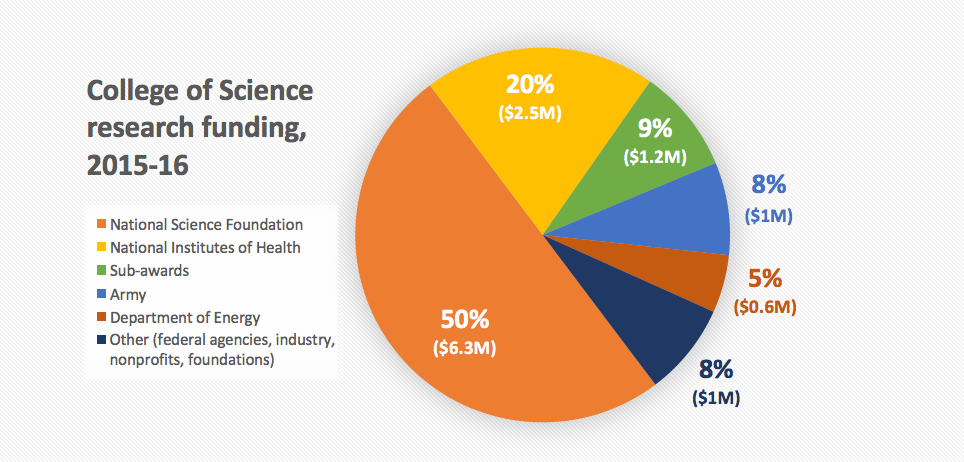
Congratulations to these faculty who received grant funding of $1 million and above, an impressive feat given the competitive climate for federal funding
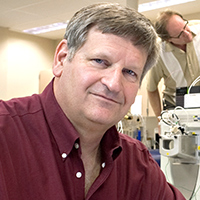
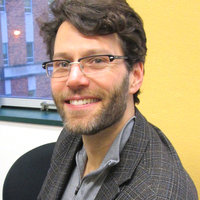
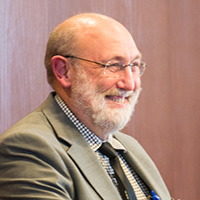
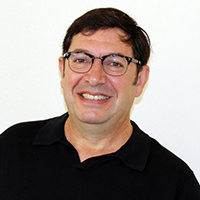
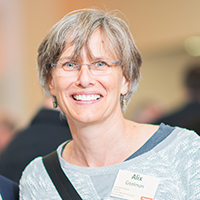
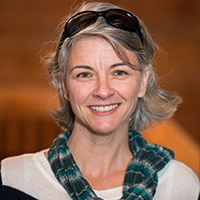
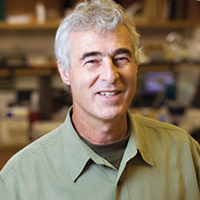
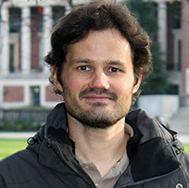
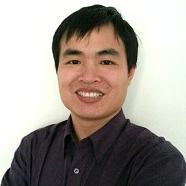

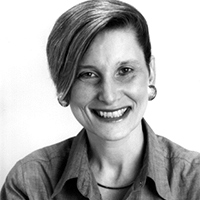
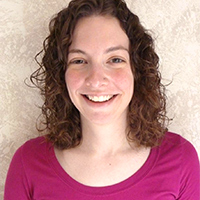
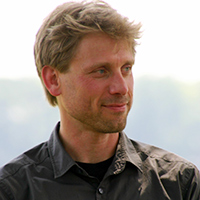
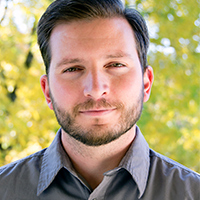
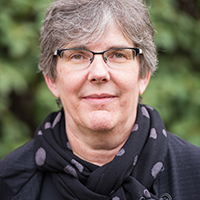
- Joe Beckman has been awarded a grant from the U.S. Army for his proposal exploring the “Development of Copper ATSM as a Therapeutic for SOD-Familial and Sporadic ALS” and a funding award from the Oregon Chapter of The ALS Association supporting his preclinical investigation of CuATSM in mice and dogs.
- Ryan Mehl has been awarded two grants for his work on nitrotyrosine (nitroTyr) proteins and genetic code expansion: a 4-year National Science Foundation award and a 5-year National Institutes of Health Award. His project will have a broad educational and scientific impact.
- Tom Dick has been awarded an NSF grant for his proposal, “Ambitious Math and Science Teaching Fellows,” to provide research-based teacher preparation courses and clinical experiences, professional development and support for teacher retention as part of the Noyce Teaching Fellows project.
- Juan Restrepo and Alix Gitelman are co-PIs on a grant to implement an NSF Research Traineeship at OSU. The project, “Risk and uncertainty quantification in marine science and policy,” encourages the development of bold and transformative models for graduate education in STEM fields.
FY2017 is off to a strong start with good momentum in our College: we have received research awards totaling more than $3 million since July 1. Congratulations to these faculty:
- Rebecca Vega-Thurber received a three-year NSF grant for $746K for her collaborative research project, “Viral Reefscapes: The Role of Viruses in Coral Reef Health, Disease, and Biogeochemical Cycling.”
- Steve Giovannoni received a 4- year NSF grant for $799K for his study, “Dimensions: Collaborative Research: Functional and genomic diversity in vitamin B1 metabolism and impacts on plankton networks and productivity.”
- Martin Schuster received a three-year NSF grant for $569K for his project, “Inter- and Intra-specific siderophore cheating in bacteria.
- Weihong Qiu received a three-year NSF grant for $520K for his collaborative research entitled “Dissecting the function, mechanism and regulation of OsKCH2: from single-molecule kinetics to cell division plane determination.”
- Rich Carter and co-PIs Judith Giordan, Michelle Dolgos and Martin Storksdieck have received an NSF Research Traineeship award for $500K in the Innovations in Graduate Education (IGE) Track to pilot and test a team-based, experiential curriculum that simultaneously integrates basic scientific research with market research and with professional skill development and practice.
- Thomas Sharpton received a three-year NSF award for $240K for his project, “Using the Phylogenetic Structure to Clarify the Evolutionary Ecological Distribution of Micro-organisms.”
- Heidi Schellman received a three-year NSF award of $160K to study simulation and design optimization for neutrino beamlines.

Research highlights
I am proud of all of the recent discoveries and breakthroughs from our faculty. Below is a sample of our successes.
Mas Subramanian and his collaborators have developed and perfected another new pigment: shades of violet and purple. The findings were recently published in the journal Inorganic Chemistry. This adds to the blue, green, yellow and orange non-toxic pigments the team discovered previously.
Bo Sun discovered a mechanism of intercellular communication that helps explain how biological systems function properly most of the time.
Andy Karplus and his students have made the first-ever detailed, atomic-level images of a peroxiredoxin, which has revealed a peculiar characteristic of this protein and might form the foundation for a new approach to antibiotics. Their findings were published last month in the journal Structure.

CONGRATULATIONS
Congratulations to the following College of Science faculty, advisors and students who received the following honors at University Day 2016:
- Chong Fang, associate professor in chemistry – Promising Scholar Award, which recognizes the high level of accomplishment by a junior faculty in a relatively short period of time at OSU, and who is also expected to continue his/her extraordinary work.
- Devon Quick, senior instructor in Integrative Biology – OSU Faculty Teaching Excellence Award for unusually significant and meritorious achievement in teaching and scholarship which enhances effective instruction.
- Brock McLeod, chief academic advisor for the School of Life Sciences – OSU Academic Advising Award recognizing undergraduate academic advising by faculty whose primary role is advising and acknowledges advising as a profession making a pivotal contribution to the OSU community.
- Rebecca Vega Thurber, associate professor in microbiology – OSU Impact Award for Outstanding Scholarship recognizes faculty who have demonstrated outstanding scholarship in a specific project or activity resulting in substantial impact beyond the university setting.
- Andrew Stickel, a graduate teaching assistant in physics – The Herbert F. Frolander Graduate Teaching Assistant Award recognizes graduate students who have excelled in their capacity as teaching assistants. Stickel also received the Department of Physics’ Peter Fontana Outstanding Graduate Teaching Assistant Award in 2011-2012.
- Jennifer Field, professor in Environmental and Molecular Toxicology and adjunct instructor in chemistry, received OSU’s Excellence in Graduate Mentoring Award.
Our faculty continue to receive national and international recognition for excellence, leadership and teaching in science.
- Distinguished Professor of Chemistry and Associate Dean Douglas Keszler received the 2017 American Chemical Society’s national award in the Chemistry of Materials.
- Dean Sastry Pantula was honored for his outstanding and extensive service to the statistics profession with the 2016 Paul Minton Service Award from the Southern Regional Council On Statistics at the 2016 Joint Statistics Meetings this summer.
- Physics professor Corinne Manogue was recognized as the Woman Physicist of August 2016 by the Committee for the Status of Women in Physics, which highlights exceptional female physicists who have positively impacted other individuals’ lives and careers.
- Doug Keszler’s startup Inpria was recognized in C&E News for their plans to expand.
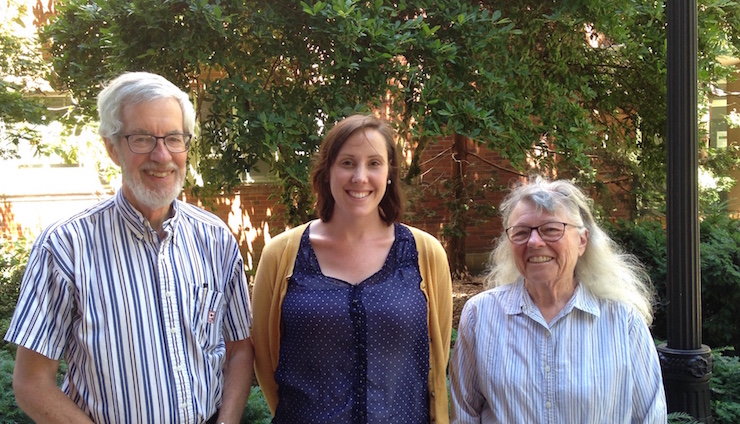
Allyson Erlendson, a first-year biochemistry and biophysics graduate student, received the 2016 Christopher and Catherine Mathews Graduate Fellowship, which is based on academic merit, teaching acumen and research potential. This endowed fellowship was established in 2015 through the generosity of Distinguished Professor Emeritus Chris Mathews and his wife Kate to help the Biochemistry and Biophysics doctoral program recruit and retain extraordinary students.
Scholarships
In aggregate, 1,056 science students—a 25% increase from last year—received more than $3.85 million in scholarship and research awards, which includes departmental, college and university awards.*
The College of Science awarded more than $900,000 in scholarships to 250 current science students for merit, need and undergraduate research experiences for the 2016-17 academic year. This represents an increase of more than 28% from last year. We were able to award an additional $130,000 this summer thanks to our generous alumni and friends and their deep commitment to enhancing student success in science.
For incoming freshmen, OSU awarded $2.95 million—a 52% increase over last year—to 806 first-year science students in our College. We are grateful to many of our alumni and friends for their continued support. They are having a great impact on our goal to build leaders in science. We are very sad and sorry to lose two of our extraordinary supporters, Jack Borsting and Chuck Merrill, who both passed away this summer.
*Note: Some students received scholarships from multiple sources, for example from departments and college or department and OSU.

VISIBILITY
Thanks to the many faculty, staff and alumni who have contributed to raising the visibility of the College and of science at Oregon State and around the world!
In case you somehow have not heard the news that has been rocking the media and the Internet this summer, YinMn, the blue pigment discovered by Chemistry Professor Mas Subramanian in 2009, has generated a new wave of worldwide media attention and interest. News of the pigment discovery went viral recently following a Tech Insider online story and video causing the story to reverberate across the Internet with more than 12 million shares and counting. YinMn is everywhere from Cosmopolitan, Slate, New York Magazine, TIME magazine and the Huffington Post to The Daily Mail, India Today, Mid-Day (Mumbai), BBC/Mundo and more. #amazingscience
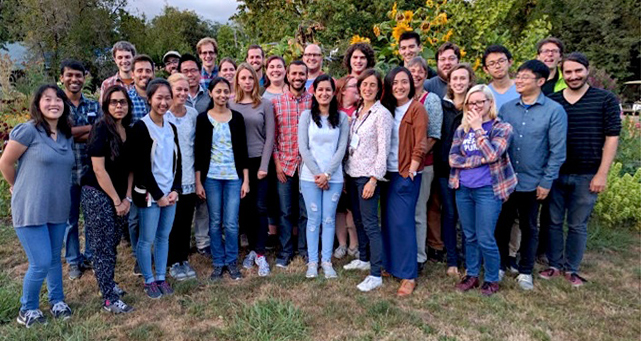
Big congratulations to Ryan Mehl and Kari Van Zee and the Department of Biochemistry and Biophysics for hosting the first-ever Genetic Code Expansion Conference August 11-14, which attracted nearly 100 participants from around the country and the world to our campus. They also hosted the second annual Genetic Code Expansion Workshop for students and educators.
May Nyman was featured in Chemical & Engineering News’ article, “Walking the tenure tightrope.”
George Poinar, Jr. has found that malaria closely related to the human type was already present in the New World some 15 to 20 million years ago. The biologist traced the parasites of malaria back to dinosaurs, stating that some of the map of malaria’s travels with humans. The news was reported in the New York Times. He also discovered a one-of-a-kind, parasitic wasp without wings preserved in 100-million-year-old amber, which seems to borrow parts of its anatomy from many insects. The news was published this week.
Kudos to Debashis Mondal and the Department of Statistics for hosting the 2016 International Indian Statistical Association (IISA) Conference August 18-21, which welcomed about 200 attracted statisticians worldwide, including participants from Japan, China, the United Kingdom, Nigeria and Egypt, across academia, industry, government and research institutes, to our campus.
Linda Hardison discussed the Oregon Flora Project at a recent Science Pub. For more than two decades, Hardison and her colleagues along with dedicated volunteers have been tracking and cataloging Oregon’s plant life, which contributed to their book, Flora of Oregon, and website.Physics alumnus Brian Hanna (M.S. ’91) was a recipient of the prestigious Presidential Award for Excellence in Mathematics and Science Teaching. He is one of 213 mathematics and science teachers selected for this award from all 50 states, the District of Columbia, Puerto Rico, U.S. Territories, and the Department of Defense Education Activity schools. President Obama recognized the educators at a ceremony in Washington, D.C. on September 8.

BUDGET & FUNDRAISING
Resources across the university are tight and enrollment is, at best, flat. As a result, all colleges have received a 0.5% budget reduction for this fiscal year. On the positive side, our total expenditures in the college have grown, and our Ecampus revenue has seen steady growth as well.
In FY13, the college had total expenses of $29.9 million excluding budget transfers for startups, TRF, RERF, etc., and $34.2 million including all budget transfers. We ended the last fiscal year, FY16, with total expenses of $37.5 million excluding budget transfers, and $41.6 million including budget transfers, reflecting a growth of 25% and 22% respectively.
During the same period, the number of our tenure track faculty grew from 115 to 132, representing a growth of 15%. During this time, we received good support from the Provost and increased our revenue through Ecampus, summer school and INTO programs. Our return of overhead remained flat—about $790K—during this period. However, the number of student credit hours taught is decreasing over the past three years.
Our expenses, on the other hand, outpaced our revenue generation and we have used up the majority of our carryover funds or savings during the past three years supporting our faculty and students. As a result, we will be operating under budget constraints this year. Currently, our College is investing very cautiously in activities that enhance our revenue and that advance our strategic goals related to student and faculty success.
Though our focus is on the future and achieving our strategic goals, this historical data [please see Metrics Executive Summary and TT Head Count] will provide good context.
Fundraising
We are grateful to our alumni, friends and the OSU Foundation for their generous support of student and faculty success and for making it another productive year of fund/friend-raising. We had a successful year of fundraising based on OSU Foundation data with $4.78 million in total gifts and pledges from our alumni and friends, exceeding our goal by 159%. We recruited two new College of Science Board of Advisors this year to provide support for our faculty and students. Our strategic plan goal is to raise our annual private giving and grants to $6 million a year.

News
Annual Report: How did we do?
Our College had much success this past year, which can be attributed to our excellence and our deep commitment to building a strong, inclusive and diverse OneScience community. Below are some results of our performance last year. Please read the full Annual Report for FY2016 online (PDF).
- We continue to lead the university in percentage of high achieving students with 50.7% (excluding Honors College) and one of the highest 6-year graduation rates from the university, although not necessarily all from our College, at 66%, on par with the Colleges of Engineering and Agricultural Sciences. This brings us close to our goal of 67% as stated in our strategic plan, however, President Ray stated that our goal should be 70%.
- We have work to do with our 6-year graduation rate for science students, which dropped 3.2% since FY14, with just 33% of students starting and graduating in Science.
- We face declining enrollment with undergraduate, master’s and doctoral students, of 6.8%, 5.8% and 9.2% respectively since FY14. This will have an impact on the resources allocated to the college.
- Another important metric is the number of degrees awarded in our college. The College of Science awarded 7.2% more degrees since FY14, slightly above OSU’s growth of nearly 7% during the same period. We also awarded the highest number of bachelor’s degrees in more than a decade—at 572. We have seen strong growth in the number of graduates earning a B.S. in math, which increased by nearly 33% since FY2014. We saw the highest number of chemistry graduates at the undergraduate level, with 56. In order to reach our goal of awarding 680 bachelor’s degrees by 2019-2020, we need to grow our undergraduate programs and increase our graduation rate.
- We have had a steady increase in Ecampus revenue of 6%. This continues to be an important source of revenue for our College and for OSU. The recommendations of the Distance Education Working Group of our strategic plan include developing workshops and seminars for faculty in order to grow Ecampus courses. Our goal is to increase Ecampus revenue from $4 million a year to $6 million a year.
- In terms of graduate degrees, doctorate degrees are up 39.3% since FY14 while master’s degrees are down 13.5% during that same period, compared to OSU’s growth of 4.5% and about 10% respectively. Our strategic goals are to award 65 master’s and 38 doctoral degrees annually by 2019-2020.
Other News
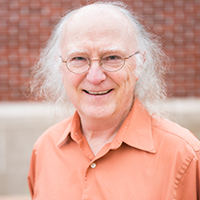
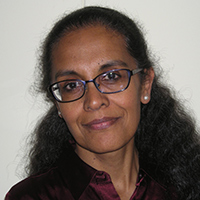

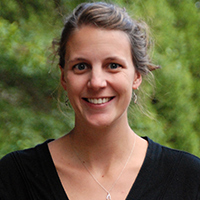
Kevin Ahern and his co-authors recently released a new online textbook, Biochemistry Free For All, and is now available to download for iPads and for iPads and Macs. This is the second electronic biochemistry and biophysics book by Ahern and his co-authors, wife and senior biochemistry and biophysics instructor Indira Rajagopal, and former student Taralyn Tan (’08). Their books are extremely popular and draw extensively on their decades-long experience as teachers, researchers and mentors.
Devon Quick and fellow biology instructor Lindsay Biga have adapted a biology textbook that is freely accessible to OSU students and learners worldwide in fall 2017. Developed through a $30,000 open textbook project award, the open source textbook will save students approximately $100,000 on textbooks annually.
We thank our faculty for their commitment to keep costs for our students low.
The College successfully launched a completely online Master of Science and Graduate Certificate in Data Analytics this fall to meet market demand for professionals with the skills to interpret large quantities of data. Students will be exposed to the whole data pipeline, from collecting data, through analysis, to reporting to stakeholders.
The College of Science Students Advisory Committee held its annual Fall Welcoming Social for all new science students on September 20. New students enjoyed ice cream and sorbet floats while connecting with faculty, advisors and current science students.

SAVE THE DATE
Spark: A Year of Arts + Science @OSU
SPARK, a yearlong celebration of the convergence of the arts and science to elevate the relationship between the arts and science at OSU, their critical interplay with each other, and the rich partnerships and collaborations that make it all possible.
This initiative is a collaboration between the Colleges of Science, Education, Liberal Arts and Honors College, and the OSU Library and Press with support from the Division of Outreach and Engagement.
With more than 60 events planned throughout the year from Corvallis to Bend, the coast and Portland, SPARK will attract and engage OSU students, faculty and staff as well as the Corvallis community and alumni throughout the region and state.
Thank you for joining us at the kickoff reception for SPARK Friday, October 7 that featured the marine science-inspired paintings of artist Abigail Losli (BFA ’16). She joined an all-female research team on what became an eye-opening cruise for her on the Pacific Ocean in June.
Losli accompanied the researchers aboard R/V Pacific Storm led by Sarah Henkel, a senior researcher at Hatfield Marine Science Center. The team conducted a study of organisms and habitat classification on the seafloor to help with preparations of offshore wind energy installations. Losli created a 24″ x 24″ painting called “Five Days at Sea,” that captured her experiences while reflecting the coexistence of arts and science.
Events
October 17 – 2016 College of Science Faculty and Staff Awards in the Memorial Union, Horizon Room, from 5 – 6:30 pm.
October 21 – SPARK event: Eileen Pollack Visiting Author. Eileen Pollack is the author most recently of The Only Woman in the Room: Why Science is Still A Boys’ Club and the novel A Perfect Life. As part of the College of Liberal Arts’ Visiting Writers Series, Pollack will present “The Facts Behind the Fiction: Research and Creative Writing” in the MU Journey room from 4-5pm and a special reading event “The Only Woman in the Room: Why Science is Still a Boys’ Club” to a campus and community audience from 7-9pm in the Valley Library Rotunda.
October 28 – Special Lecture by zoology alumnus Kent Thornburg (’70, PhD ’72) is a globally acclaimed scientist in cardiovascular physiology, adult-onset chronic disease, and maternal-fetal health at OHSU. He will discuss, “Heart Disease: New Insights from Epidemiology and Basic Science” at 10:30 am in Kelley Engineering Center, Room 1001.
November 1 – Science through Music: Metabolic Melodies with Biochemistry & Biophysics professor Kevin Ahern. He regularly enchants science students with his limericks and melodies to learn science in a fun and memorable way. A legend on OSU’s campus for more than 20 years, Ahern will perform his “metabolic melodies” with a Divine, a campus choir, proof that music is the perfect backdrop for science, teaching and learning. LaSells Stewart Center, Construction and Engineering Hall, 7-8 pm.
November 2 – SPARK event: Women in Science: A Performing Arts Reading Series Join Theater Arts at OSU as we gather in the Special Collections and Archives Research Center to perform several readings from plays on women in science, including Photograph 51, which describes the contributions of Rosalind Franklin to the discovery of the structure of DNA. SCARC holds one of a handful of original copies of Photograph 51; this and other items will be on display. 7pm SCARC Reading Room, OSU Library.
November 7 – The Career Development Center launched a new program, LIFT Science, that offers monthly roundtable discussions for students to explore disparities in the science workforce. The next program will feature mathematics professor Juan Restrepo, who will present, “Highlights of your life (identify your core value).”
November 17-18 – New: Innovating Science Online Speaker Series – The College of Science and Ecampus are co-sponsoring a speaker series highlighting best practices of developing and teaching online courses in science disciplines. The first speaker is Gerd Kortemeyer, Associate Professor of Physics at Michigan State University.
November 18 – Annual College of Science Alumni Awards
November 21 – Fall Distinguished Lecture features Carl Wieman, Nobel Laureate in Physics, Stanford University physics and education professor and Corvallis native, who will discuss “Taking a scientific approach to learning and teaching science (and most other subjects).” LaSells Stewart Center in Construction & Engineering Hall, 5:30 pm lecture, following a 5:00 pm reception honoring Dr. Wieman.
